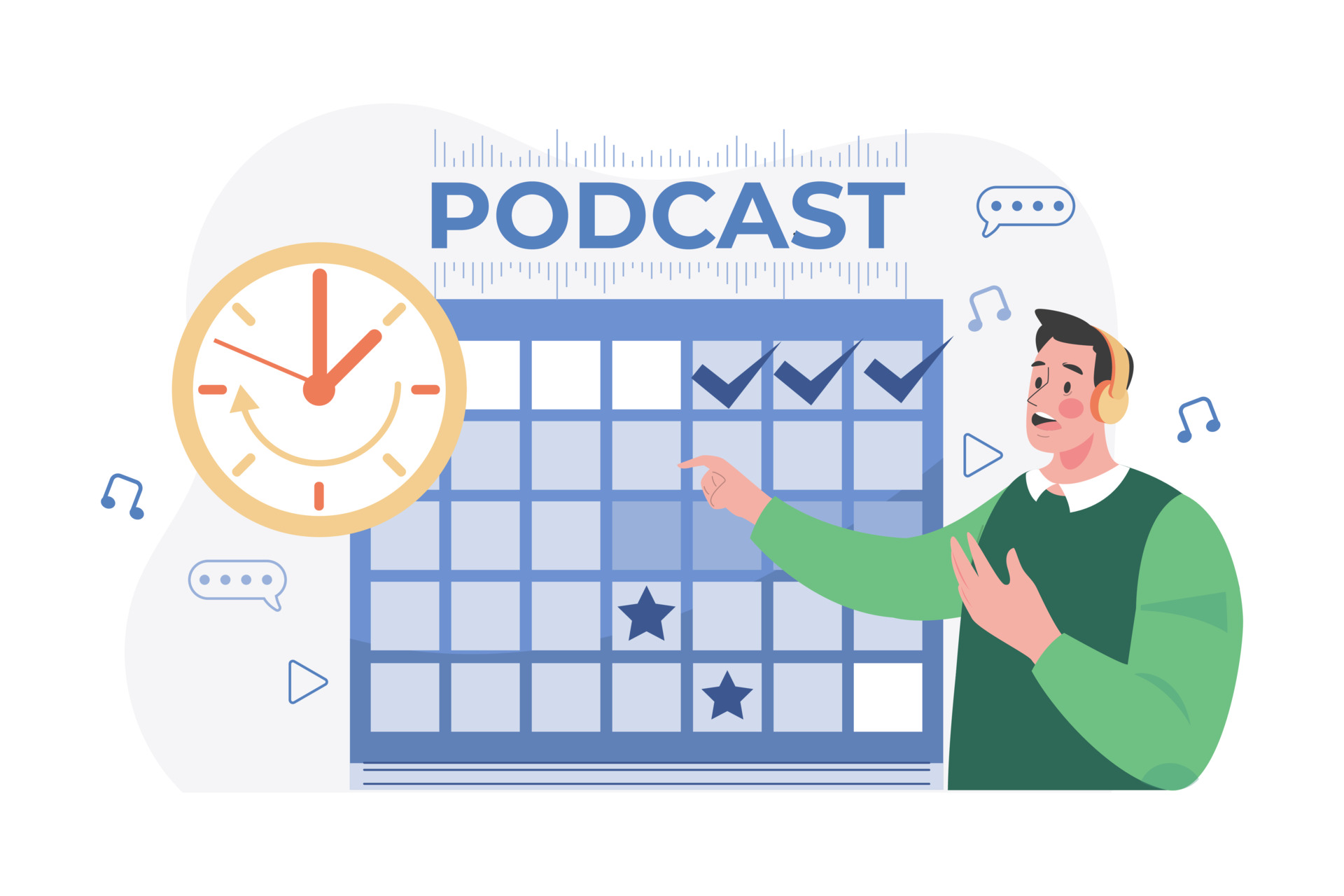In today’s fast-paced and competitive world, B2B podcasting has emerged as a powerful tool to engage and inform your audience. However, creating a successful podcast requires more than just compelling content. To truly thrive and stand out from the competition, you need to know how to increase listens and downloads for your B2B podcast. In this blog post, we’ll dive into 18 actionable strategies that can help you achieve just that, covering everything from understanding your target audience to leveraging social media and investing in paid advertising. Let’s embark on this journey to transform your B2B podcast into a powerhouse of audience engagement and growth!
Key Takeaways
Understand and identify your target audience to create a successful B2B podcast.
Optimize content and format, leverage multiple platforms, engage with guests/influencers, repurpose content for SEO purposes & utilize email marketing tools.
Monitor performance metrics & consider paid advertising options such as Google Ads or contextual ads to reach targeted audiences.
Understanding Your Target Audience
Creating a successful B2B podcast requires a deep understanding of your target audience. By understanding who your ideal listener is and analyzing the preferences and behaviors of your current listeners, you can tailor your podcast content to resonate with them on a deeper level.

This not only helps to increase podcast downloads but also fosters a stronger connection with your audience, ultimately leading to loyal listeners who eagerly await each new episode and contribute to the growing number of episode downloads, making your show one of the successful podcasts.
Identifying Your Ideal Listener
Examining demographics, psychographics, and consumer choices will help you determine your ideal listener. This information allows you to create a listener persona, a representation of your perfect audience member. By targeting your content to this persona, you can ensure that your marketing and promotional efforts resonate with the right people, attracting more podcast listeners and maximizing the impact of your podcast.
Analyzing Current Listeners
Analyzing the preferences and behaviors of your current listeners is key in refining your podcast content and engaging new listeners. Here are some factors to consider:
- Age demographic
- Gender breakdown
- Geographic distribution
- Topics of interest
Understanding these aspects will help you tailor your content to better suit your audience and attract new listeners.

This will enable you to recognize patterns and trends, helping you create content that caters to their needs and interests, ultimately driving more downloads and listens.
Optimizing Podcast Content and Format
Boosting your podcast’s performance hinges on optimizing your podcast content and format. To ensure your podcast stands out from the crowd, you need to craft engaging episode titles and descriptions and maintain a consistent publishing schedule.
These strategies not only improve searchability but also provide a better listening experience, attracting new listeners and retaining your current audience.
Episode Titles and Descriptions
Enhancing your podcast’s visibility in search engine results can be achieved by using SEO-friendly keywords in your episode titles and descriptions. To create compelling titles and descriptions, include high-traffic keywords relevant to the episode’s content and consider adding the series’ name to the headline.
This will not only improve searchability but also provide potential listeners with a clear understanding of what to expect from your podcast episode.
Consistent Scheduling
Retaining your audience’s interest and trust necessitates the establishment and maintenance of a regular publishing schedule. By consistently releasing new episodes, you provide your listeners with a sense of anticipation, allowing them to adjust their schedules accordingly.

To maintain a consistent schedule, consider setting reminders, creating a content calendar, and scheduling posts ahead of time. Remember, flexibility is key – be prepared to adjust your schedule as needed to accommodate unforeseen circumstances.
Leveraging Multiple Podcast Platforms
Leveraging multiple podcast platforms is a strategic move to maximize your podcast’s visibility and reach. By submitting your podcast to popular directories, aggregators, and niche platforms, you can ensure that your podcast is accessible to a wide range of potential listeners.
In the following subsections, we will explore strategies for submitting to directories and aggregators and embracing niche platforms.
Submitting to Directories and Aggregators
Reaching a broader audience is achievable by submitting your podcast to popular podcast directories like Apple Podcasts, Spotify, and Google Podcasts. These platforms have millions of users, providing your podcast with increased visibility and the potential for more downloads.
Additionally, consider submitting to niche platforms like Podbean, Spreaker, and Castbox, which cater to specific industries or interests and can help you target your ideal listener more effectively.
Exploring Niche Platforms
Reaching a highly targeted podcast audience is possible through the unique opportunity offered by niche platforms. By exploring platforms that cater to specific industries or interests, you can ensure that your podcast is accessible to those who are most likely to find it valuable.
When evaluating niche platforms, consider features such as analytics, monetization options, and podcast hosting capabilities to determine the best fit for your podcast’s needs.
Engaging with Guests and Influencers
Your podcast’s visibility and credibility can significantly be boosted by collaborating with guests and influencers. By encouraging guest promotion and cross-promotion with other podcasts, you can increase your podcast’s reach and tap into new audiences.

In the following subsections, we will discuss strategies for guest promotion and cross-promotion with other podcasts.
Guest Promotion
Expanding your podcast’s reach is possible through guest promotion, given that guests often bring their own audience with them. To encourage guests to promote the episode on their platforms, provide them with promotional materials like episode artwork, a link to the episode, and a concise description.
This not only increases the likelihood of them sharing the episode but also makes it easier for them to do so.
Cross-Promotion
rowing your listener base can be achieved by partnering with complementary podcasts for cross-promotion. By appearing as a guest on each other’s shows or mentioning each other’s podcasts in your episodes, you can introduce your podcast to new audiences who are likely to be interested in your content.
This mutually beneficial arrangement can result in increased downloads and listens for both podcasts.
- Read more here on Nurturing B2B Podcast Guest Relationship
Link: https://podcastchef.com/blog/nurturing-your-b2b-podcast-guests-to-create-a-strong-referral-relationship/
Harnessing the Power of Social Media
Promoting your podcast and reaching new listeners can be effectively done through the powerful tool of social media. By implementing platform-specific strategies and utilizing social media tools, you can create engaging content that drives traffic to your podcast and fosters a sense of community among your audience.

In the following subsections, we will discuss strategies for platform-specific content creation and the utilization of social media tools.
Platform-Specific Strategies
Maximizing your podcast’s visibility on social media relies on creating platform-specific content. Focus on generating engaging content for platforms like:
that resonates with your target audience.
For example, share eye-catching images with quotes from your podcast episodes or create short video clips that highlight key moments. Tailoring your content to each platform will ensure that it captures the attention of potential listeners.
Utilizing Social Media Tools
Creating shareable content that drives traffic to your podcast can be aided by social media tools like quote blocks, videograms, and Magic Clips. These tools make it easy to produce visually appealing and engaging content that can be shared across multiple platforms, increasing your podcast’s visibility and attracting new listeners.
By utilizing these tools, you can streamline content creation and maximize the impact of your social media efforts, including crafting engaging social media posts, on various social media channels.
Repurposing Podcast Content
Reaching new audiences and improving search engine optimization can be achieved by repurposing your podcast content into different formats. By creating transcriptions, blog posts, and video adaptations of your podcast episodes, you can make your content more accessible to a diverse range of listeners.

In the following subsections, we will discuss strategies for repurposing podcast content through transcriptions and blog posts, as well as video adaptations.
Transcriptions and Blog Posts
Improving your podcast’s search ranking and accessibility is possible by publishing episode transcriptions and turning them into blog posts. Transcriptions make it easier for search engines to index and rank your content, driving more traffic to your podcast website.
Additionally, blog posts provide another avenue for potential listeners to discover your podcast, further increasing your reach and downloads.
Video Adaptations
Attracting a wider audience can be accomplished by recording video podcast episodes and sharing them on platforms like YouTube. Video content, such as YouTube videos, is highly engaging and easily shareable, making it an excellent medium for promoting your podcast.

By creating video adaptations of your episodes, you can tap into the growing popularity of video content and reach potential listeners who may not have discovered your podcast through traditional audio channels.
Email Marketing and Newsletters
Keeping your audience informed about new episodes and other podcast-related updates can be done effectively with email marketing and newsletters. By building an email list and crafting personalized emails, you can foster a sense of connection with your listeners and encourage them to share your podcast with others.
In the following subsections, we will discuss strategies for building an email list and crafting personalized emails.
Building an Email List
Creating a direct line of communication with your listeners necessitates building an email list. By sending personalized notifications about new episodes and other podcast-related news, you can keep your audience engaged and encourage them to share your content with others.

Constructing an email list requires creating an opt-in form, advertising the opt-in form, and gathering email addresses from interested listeners.
Personalized Emails
Encouraging subscribers to listen and share your podcast hinges on crafting personalized emails with clear call-to-action links. By making it easy for your subscribers to access and share your content, you increase the likelihood that they will become loyal listeners and advocates for your podcast.
Personalized emails also demonstrate that you value your subscribers’ time and attention, fostering a sense of connection and trust between you and your audience.
Monitoring Performance Metrics
Evaluating your podcast’s success and identifying areas for improvement demands monitoring performance metrics. By tracking downloads and listens, you can measure audience engagement and growth over time, enabling you to make informed decisions about your podcast’s content and promotion strategies.

In the following subsections, we will discuss strategies for tracking downloads and listens, as well as comparing your podcast’s performance to industry benchmarks.
Downloads and Listens
Assessing your podcast’s audience engagement and growth requires tracking downloads and listens. By monitoring these metrics, you can identify trends and patterns that can inform your content and marketing decisions.
This information will also enable you to evaluate the effectiveness of your promotional efforts, helping you refine your strategies and maximize your podcast’s reach and impact.
Comparing to Industry Benchmarks
Understanding how your podcast stacks up against competitors and identifying areas for improvement can be aided by comparing your performance to industry benchmarks. By analyzing your podcast’s downloads, listens, and engagement metrics in relation to industry standards, you can recognize potential areas for enhancement, including content, format, and promotion.
This insight will enable you to make informed decisions that drive your podcast’s growth and success.
Investing in Paid Advertising
Promoting your podcast and reaching new listeners can be effectively achieved by investing in paid advertising. By targeting specific audiences and using platforms like Google Ads and contextual ads, you can increase your podcast’s visibility and attract potential listeners who are interested in your content.

In the following subsections, we will discuss strategies for using Google Ads and contextual ads, as well as creating targeted ad campaigns.
Google Ads and Contextual Ads
Reaching potential listeners who are interested in your podcast’s topic can be done through effective tools like Google Ads and contextual ads. These advertising platforms allow you to target users based on their interests, demographics, and other criteria, ensuring that your ads reach the right audience.
To maximize the impact of your advertising efforts, consider incorporating built-in players into your ads, making it easy for users to listen to your podcast directly from the ad itself.
Targeted Ad Campaigns
Maximizing the effectiveness of your advertising efforts can be achieved by creating targeted ad campaigns that focus on your ideal listener. By crafting ads that resonate with your target audience, you can increase the likelihood that they will listen to and share your podcast.
To create a successful targeted ad campaign, identify your target audience, research the most effective platforms to reach them, craft persuasive ad copy, and determine a budget.
Summary
In conclusion, increasing listens and downloads for your B2B podcast involves a multifaceted approach that includes understanding your target audience, optimizing content and format, leveraging multiple platforms, engaging with guests and influencers, harnessing social media, repurposing content, utilizing email marketing, monitoring performance metrics, and investing in paid advertising. By implementing these actionable strategies, you can transform your podcast into a powerful tool for audience engagement and business growth. Now it’s time to put these strategies into action and take your podcast to new heights!
Podcast Chef is here to help!
We’re a white glove, all inclusive b2b podcasting company. We provide a broad range of services from podcast setup and production, through to guest booking and audience engagement. Our team would love to learn more about your goals and see if a podcast can help! Click here to schedule a free consultation and demonstration of some of the results we’ve been able to achieve.
Frequently Asked Questions
How do I promote my B2B podcast?
Promote your B2B podcast on LinkedIn, Twitter, Facebook, Instagram and TikTok using hashtags, keywords, images, videos, and captions. Use organic social posts, paid media, email marketing, guest appearances, paid advertising, and podcast directories to reach wider audiences.
How do I get 1000 listeners for my podcast?
Focus on delivering a high-quality show that accurately reflects your topic, then pick one or two social media platforms and use them consistently to promote it. Doing so will help you reach 1,000 listeners.
How do I attract more podcast listeners?
Leverage targeted social media, podcast directories and app submissions, create a podcast trailer, host giveaways and contests, and invest in video to attract more podcast listeners.
How to get to 10,000 downloads podcast?
Promoting your podcast and increasing the episodes per week will get you to 10,000 downloads. Make sure you are using a media hosting that won’t stop serving you if you exceed your limit.
What are some effective ways to optimize podcast content and format?
Optimizing podcast content and format involves creating engaging titles and descriptions, as well as regular publishing, to ensure listeners stay engaged.